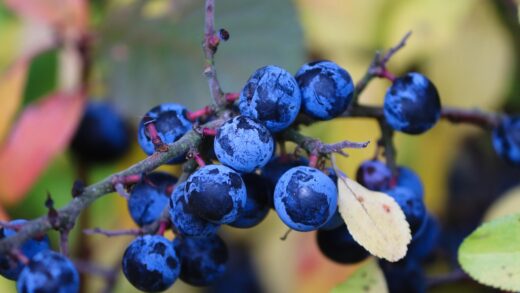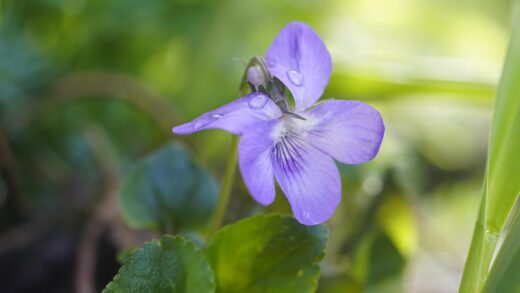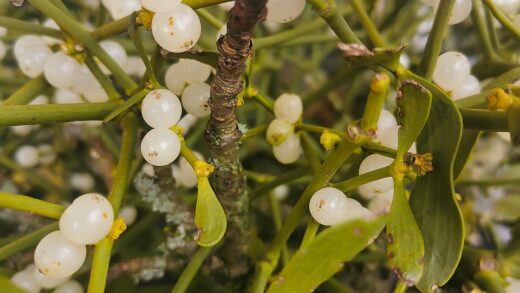Pruning the beautiful bleeding heart is a practice guided by the plant’s natural life cycle and is primarily focused on aesthetics and garden sanitation rather than shaping the plant or encouraging more blooms. Unlike many other perennials, this plant does not benefit from deadheading (removing spent flowers) to prolong its flowering season, as its bloom period is naturally concentrated in the spring. Therefore, the main purpose of cutting back the plant is to manage its appearance as it enters its natural summer dormancy and to maintain the overall health of the garden bed.
The primary pruning event of the year involves cutting back the foliage after it has naturally senesced, or died back. This process is crucial for tidying the garden, as the yellowing and collapsing leaves can look unsightly and detract from the appearance of other summer-blooming plants. Removing this dead organic material also serves an important hygienic purpose. Decaying foliage can create a damp environment at the soil level that may harbor fungal spores, such as those that cause botrytis or leaf spot, and can also provide a hiding place for slugs and other pests.
During the active growing season, any pruning that is done is typically very minor and reactive. This might involve trimming away any leaves that have been physically damaged by wind, hail, or passing foot traffic to keep the plant looking neat. Similarly, if you notice a leaf that shows early signs of a fungal disease, snipping it off and disposing of it can sometimes help to prevent the disease from spreading further throughout the plant.
It is important to understand what pruning is not for in the case of the beautiful bleeding heart. You should not prune the plant to try and control its size or shape, as it has a naturally graceful, arching habit that should be allowed to develop. Furthermore, cutting the plant back while the foliage is still green and healthy is detrimental, as this will rob the plant of its ability to photosynthesize and store the energy it needs to survive dormancy and bloom again the following year. Patience is the guiding principle for pruning this particular perennial.
When to cut back the foliage
The timing of the main pruning event for the beautiful bleeding heart is dictated entirely by the plant itself and is a critical aspect of its care. The correct time to cut back the foliage is after it has completely finished its job for the season and has turned yellow or brown. This color change is the visual signal that the process of senescence is complete. During the weeks that the foliage is yellowing, the plant is actively withdrawing valuable nutrients and energy from the leaves and stems and storing them in its underground rhizomes for the next growing season.
More articles on this topic
This energy storage process is absolutely vital for the plant’s long-term health and vigor. Cutting the plant back prematurely, while the leaves are still predominantly green, will interrupt this critical process. Doing so can significantly weaken the plant, leading to reduced flowering and less robust growth in the following year. It is one of the most common mistakes made in the care of this plant, often done by gardeners who are impatient with the untidy appearance of the dying foliage.
The timing of this die-back can vary. In hotter climates or in sunnier locations, the foliage may begin to yellow and decline as early as late spring or early summer, shortly after the flowering period ends. In cooler, shadier, and moister conditions, the foliage may remain attractive and green well into the summer months before it begins its natural decline. You must observe your specific plant in its unique environment and wait for it to tell you when it is ready to be cut back.
A good rule of thumb is to wait until at least two-thirds of the foliage has turned yellow or brown before you reach for the pruners. Once the leaves and stems have collapsed and offer no resistance when tugged gently, they are ready to be removed. By exercising this patience, you ensure that the plant has had every opportunity to maximize its energy reserves, setting it up for a successful dormancy and a spectacular return in the spring.
The proper technique for cutting back
The technique for cutting back a dormant beautiful bleeding heart is simple and straightforward. You will need a clean, sharp pair of hand pruners, shears, or garden scissors. Using clean tools is an important habit in the garden as it helps to prevent the transmission of plant diseases from one plant to another. You can easily sterilize your tools by wiping the blades with rubbing alcohol or a household disinfectant wipe before you begin.
More articles on this topic
Once the foliage has fully died back and you have determined it is the right time to prune, grasp the dead stems and leaves in one hand and cut them back close to the base of the plant. A height of about one to two inches above the soil line is ideal. This removes the unsightly dead material while leaving a small stub that helps you to remember the plant’s location, which can be useful to avoid accidentally digging it up or damaging the crown during autumn or spring garden tasks.
After cutting back all the dead growth, it is essential to gather and remove it from the garden bed. Do not leave the dead foliage in place to decompose over the winter. As previously noted, this material can harbor overwintering disease spores and pest eggs. By removing it, you are practicing good garden sanitation that will contribute to a healthier garden in the long run. The removed foliage should ideally be disposed of in the trash or burned, rather than added to a compost pile, especially if the plant showed any signs of disease during the growing season.
This annual cut-back is the main pruning task required for the beautiful bleeding heart. It is a simple but important part of the plant’s yearly cycle of care. It keeps the garden looking tidy, helps to prevent future disease and pest problems, and prepares the plant for its winter rest, clearing the way for the fresh, new growth that will emerge triumphantly in the spring.
Pruning for disease management
While the primary pruning is done at the end of the season, minor pruning during the growing season can be an effective tool for disease management. The key to this practice is regular observation of your plants so that you can spot problems as soon as they arise. If you notice a leaf or a stem that has developed spots, powdery mildew, or any other sign of a fungal infection, it is often best to remove that part of the plant immediately.
To do this, use a sharp, clean pair of snips or pruners. Make your cut well below the diseased portion, cutting back into healthy tissue to ensure you have removed all of the infected material. After making the cut, it is a good practice to clean your pruning tool again before moving on to another plant or even another cut on the same plant. This prevents the accidental spread of the fungal spores to healthy tissue.
The pruned-off, diseased material should be handled carefully. Do not simply drop it on the ground or toss it into your compost bin, as this can allow the disease to spread. Instead, place it directly into a bag and dispose of it in the trash. This selective removal of infected parts, often referred to as sanitation pruning, can sometimes be enough to stop a minor disease outbreak in its tracks without the need for chemical fungicides.
This type of pruning is also beneficial for improving air circulation within the plant, although the naturally open habit of the beautiful bleeding heart often makes this less of a necessity than with denser plants. If stems are particularly crowded, selectively thinning out one or two of the weakest stems from the center of the clump can allow more air to move through the foliage. This helps the leaves to dry faster, creating an environment that is less favorable for the development of fungal diseases.
To deadhead or not to deadhead
The practice of deadheading, which is the removal of spent flowers, is a common gardening task for many perennials, as it can encourage a second flush of blooms and prevent the plant from wasting energy on seed production. However, when it comes to the beautiful bleeding heart, deadheading is generally not necessary or particularly effective. This plant has a finite blooming period in the spring, and once it is finished, it will not be stimulated to produce more flowers in the same season by removing the old ones.
The flowers of the beautiful bleeding heart will naturally fade and drop from their stems after they have been pollinated. The plant may then go on to produce small, pea-like seed pods. Allowing the plant to produce seeds does consume some of its energy, but for a healthy, well-established plant, this is not a significant drain on its resources. Some gardeners may choose to snip off the flower stalks after all the blossoms have faded simply for aesthetic reasons, to keep the plant looking tidy, and this will cause no harm.
If you are interested in collecting seeds for propagation, you should, of course, leave the flower stalks intact and allow the seed pods to develop and ripen on the plant. The pods will turn from green to a brownish-tan color when they are mature. It is important to collect them before they split open and disperse their seeds. This is a clear case where deadheading would be counterproductive to your goals.
In summary, while you can trim off the old flower stems for a neater appearance after the blooming period is over, there is no horticultural benefit to be gained from diligently deadheading individual flowers as they fade. The beautiful bleeding heart’s energy is best focused on its foliage and the subsequent transfer of that energy to its roots in preparation for the following year. Therefore, gardeners can save themselves this task and simply enjoy the spectacular but fleeting floral show that the plant provides each spring.


















